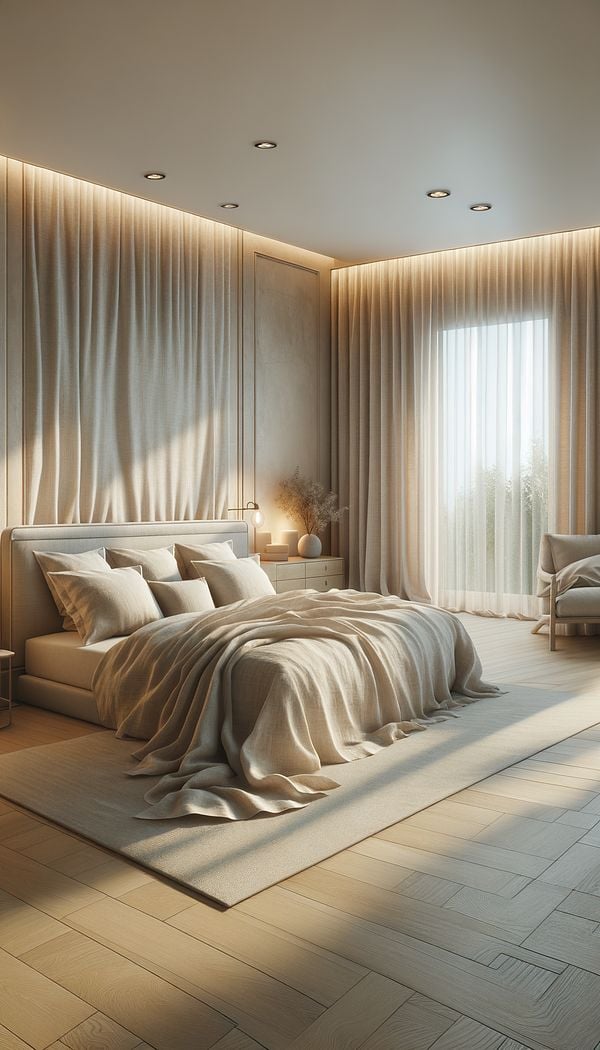What is Linen?
Linen is a textile made from the fibers of the flax plant.
Description
When delving into the world of interior design, linen presents itself as a cornerstone textile due to its impressive durability, natural origins, and aesthetically pleasing weave. Historically pivotal and culturally significant across various societies, linen has been used for thousands of years, dating back to ancient civilizations. The process of creating linen involves harvesting flax plants, after which the fibers are extracted and spun into yarn. This yarn is then woven into fabric, embodying a natural, textured appearance that’s highly valued in the interior design community.
Linen's charm lies in its ability to blend seamlessly into a multitude of design styles, ranging from modern minimalist to rustic country themes. Its natural look and feel evoke a sense of comfort and earthiness, resonating well with the increasing demand for sustainable and eco-friendly materials in interior design. This fabric is not only prized for its aesthetic appeal but is also lauded for its breathability, moisture-wicking properties, and ability to soften over time, making it an enduring favorite for both decorators and homeowners alike.
Beyond aesthetics, linen is a robust choice for home textiles due to its long-lasting nature. Its strength and durability are unmatched, resisting wear and tear much better than many other fabrics. Additionally, linen is known for its hypoallergenic properties, making it an excellent choice for those with sensitive skin or allergies.
Usage
Linen is widely used in the interior design world for a variety of applications, including window treatments like curtains and drapes, textiles and upholstery for furniture, and in bed linens and tablecloths. Its versatility also extends to decorative items like throw pillows and wall hangings. Not only does it serve as an aesthetic fabric for home decor, but due to its natural and sustainable qualities, linen is also making strides in the realm of sustainability and eco friendly design.
FAQs
-
How is linen made?
Linen is made by harvesting flax plants, extracting the fibers from the stalks, spinning these fibers into yarn, and then weaving the yarn into fabric.
-
What are the benefits of using linen in interior design?
Linen offers durability, natural aesthetics, breathability, and hypoallergenic properties. It’s also eco-friendly and improves with age, becoming softer over time.
-
Can linen be used in all types of interior design themes?
Yes, linen’s natural and versatile appearance makes it suitable for a wide range of design styles, from contemporary to traditional.
Practical Application
To best incorporate linen into your interior design, consider its natural texture and aesthetic appeal. Use it in areas where its breathability and casual elegance can shine, such as window treatments, upholstery, and bed linens. Embrace its natural crinkles and texture for a relaxed and organic look, or iron for a crisp, more formal appearance. When choosing linen, opt for high-quality materials to ensure durability and a lovely aging process.
-
Window Treatments65 articles
-
Decorating Principles & Elements330 articles
-
Materials & Textiles360 articles
-
Textiles & Upholstery252 articles
-
Sustainability & Eco-Friendly Design69 articles
-
Vis-A-VisVis-à-vis in interior design refers to furniture or objects facing each other.
-
ApronAn apron is a decorative or structural panel fixed beneath a surface such as a tabletop, window ledge, or countertop.
-
Butterfly TableA versatile table featuring hinged leaves that can be folded and stored under its top.
-
UpholsteryUpholstery refers to the material, which can include fabric, padding, webbing, and springs, used to cover furniture.
-
Gender NeutralGender neutral in interior design refers to spaces or designs that do not conform to traditional gender norms and stereotypes.
